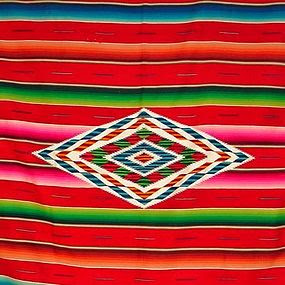

After such an inspirational day at Mary Restieaux and having been introduced to the wonderful world of Ikat dying, I decided that I would use the technique in my current project. I set up a dye workshop in my chaotic halls of residence kitchen and with 5 bowls of different colour dye bubbling on the hob, I began the dip dye process. I decided to dye ecru silk 2/60. I chose silk because I think it can create such a luxurious and rich looking fabric which would be ideal for the high end interiors market. However, on reflection I should have probably used a much thicker thread as this would have displayed the ikat pattern far clearer as opposed to being drowned out by the vibrant stripes of my colourful warp. Some of the yarns dyed were to be used for giant wrappings! It was fun to see the scale of my colour palette really exaggerated.
I initially wrapped the yarn around my A2 card to get the correct circumference so that the undyed ikat stripes would line up. I then tied clear polythene bags and string around selected sections of the yarn to act as the resist before dip-dying. When dry, I wound the hanks onto cheeses. I believe these look like beautiful creations in their own right!

These were then wrapped around mountboard in stripes alternating with block colour threads.
Below is an image of some of my work presented for assessment. My giant wrappings are on view in the background and attracted a lot of admiration from my uni friends who realize the extent of time and patience needed to complete them!

























